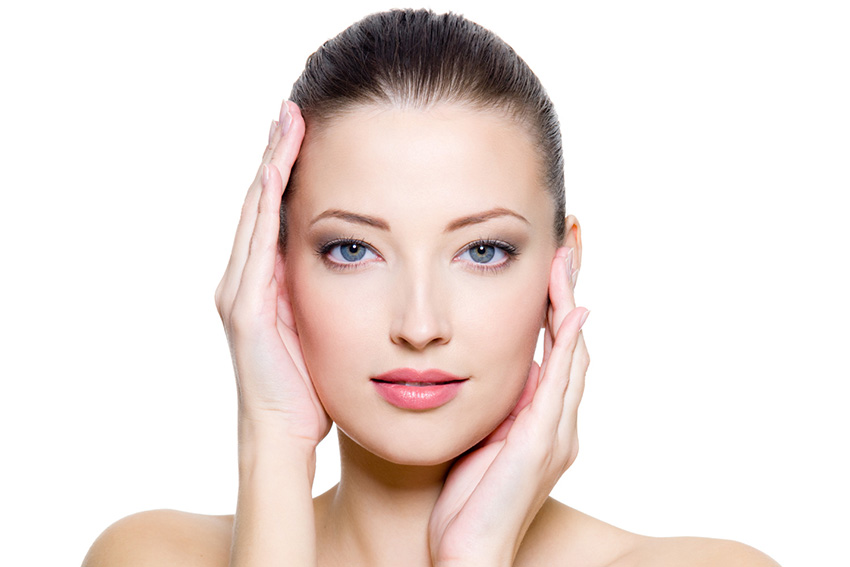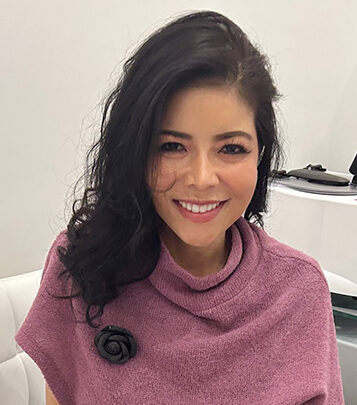Skin Rejuvenation
Skin ageing is a natural and gradual process that happens to everyone as we get older. There are two types of skin ageing processes:
- Intrinsic ageing: This is the natural ageing process that occurs due to the passage of time. Intrinsic ageing is determined by genetics and occurs at a relatively constant rate throughout life. As people age, their skin becomes thinner, less elastic, and less able to retain moisture. Consequently, lead to wrinkles, fine lines, and dry, rough skin.
- Extrinsic ageing: This type of ageing is caused by external factors, such as environmental exposures and lifestyle. Extrinsic ageing can be accelerated by exposure to UV radiation from the sun, smoking, pollution, poor nutrition, and stress. These factors can cause damage to the skin and lead to the breakdown of collagen and elastin fibres, which are responsible for skin elasticity and firmness. Ultimately can result in wrinkles, age spots, and other signs of ageing, such as dry and thinning skin, uneven skin tone, broken capillaries, freckles (lentigos), and blemishes.
Fortunately, there is a solution! Skin rejuvenation treatments are designed to restore your skin to its former glory.
Skin rejuvenation is a process of improving the appearance of skin that has become dull, aged, or damaged over time. There are several different approaches to skin rejuvenation, depending on the specific concerns and needs.
Frequently Asked Questions
What Are Different Ways of Facial Rejuvenation?
Skin rejuvenation refers to a variety of procedures and techniques designed to improve the appearance and reduce the signs of skin aging. They aim to stimulate collagen production, improve skin texture and tone, and restore a more youthful and vibrant look to the skin.
There are several different ways of facial rejuvenation, depending on the specific concerns and needs of each individual. There are techniques available, ranging from non-invasive treatments to surgical procedures. Some of the most common methods of skin rejuvenation include:
Non-surgical treatments: Non-invasive rejuvenation treatments include injectables, such as Botox and dermal fillers, which can help to smooth out wrinkles and restore volume to the face. Other non-surgical treatments include chemical peels, microdermabrasion, and laser resurfacing, which can help to improve the texture and tone of the skin.
- Skincare: If you’re looking for effective and long-term anti-ageing solutions, topical applications are a great option. It is simple and effective ways to rejuvenate the skin, through a daily skincare regimen. Skin care products that contain antioxidants help protect the skin from free radicals that contribute to aging. Topical treatments such as retinoids, vitamin C, and peptides can stimulate collagen production and improve skin texture and tone. Sunscreen can help in skin rejuvenation by protecting your skin from UV radiation, preventing collagen breakdown, preventing hyperpigmentation, and hydrating your skin.
- Injectables: Injectables such as Botulinum toxin and dermal fillers, are non-surgical treatments that can reduce the appearance of wrinkles and fine lines, and restore volume to the face. Botulinum toxin injections work by relaxing the muscles that cause wrinkles, while dermal fillers add volume and plumpness to the skin.
- Chemical peels: Chemical peels are a popular non-invasive procedure that removes the top layer of dead skin cells with a chemical solution. The chemical solution causes irritation and inflammation, which stimulates fresh cell growth and collagen production, leading to less wrinkling and pigmentation irregularities.
- Microneedling: is a safe and effective procedure to rejuvenate the skin. A device with multiple tiny needles is used to create controlled micro-injuries on the skin. This minimal injuries trigger the skin’s natural healing response, and stimulates collagen and elastin production, leading to a firmer, smoother, and more youthful-looking skin.
- Laser treatments: Laser treatments use focused light energy to remove damaged skin cells and stimulates collagen production. They can be used to improves skin texture and tone, tightens and firms the skin, treat fine lines and wrinkles, hyperpigmentation, and other signs of ageing with minimal downtime.
- Radiofrequency treatments: Radiofrequency treatments use energy waves to heat the deep layers of the skin, stimulating collagen production and improving skin firmness and elasticity.
- Ultrasound treatments: Ultrasound treatments use sound waves to stimulate collagen production and improve skin elasticity. They can be used to treat fine lines and wrinkles, and tighten and lift sagging skin.
Surgical treatments: There are several surgical procedures available for skin rejuvenation, which can be performed by a qualified plastic surgeon or dermatologist. Here are some common surgical procedures for skin rejuvenation
- Surgical procedures: Surgical procedures such as facelifts, brow lifts, and eyelid surgery involve removing excess skin and tightening the underlying muscles to restore a more youthful and lifted look to the face.
- Laser resurfacing: Laser resurfacing is a surgical procedure that uses a laser to remove the top layer of skin and stimulate the production of new skin cells. The laser energy heats and vaporizes the skin, which triggers the body’s natural healing response, leading to smoother, tighter, and more youthful-looking skin. Laser resurfacing can improve the appearance of fine lines, wrinkles, sun damage, and acne scars.
- Fat transfer: is a surgical procedure that remove fat from one part of the body, such as the thighs or abdomen, and inject it into areas of the face that have lost volume, such as the cheeks or under the eyes. The surgeon uses liposuction to remove the fat from the donor site and then purifies it before injecting it into the desired areas. Fat transfer can improve the appearance of hollow cheeks, sunken eyes, and deep wrinkles.
These procedures can be highly effective in improving the appearance of the skin. However, they are more invasive and require more downtime and recovery than non-surgical procedures. It is important to choose a qualified and experienced surgeon and to carefully consider the risks and benefits before undergoing any surgical procedure.
What Are the Conditions That Can Be Treated with Skin Rejuvenation and Resurfacing?
Skin rejuvenation is a variety of procedures and techniques to improve the overall appearance and health of the skin. Skin rejuvenation treatments can address the following:
- Static wrinkles: appear as permanent creases on the skin that remain visible regardless of facial expression. In time, without treatment, they become increasingly deeper. Skin rejuvenation treatments can help to improve static wrinkles by stimulating collagen production, promoting skin cell renewal, and improving the overall health and appearance of the skin.
- Dynamic lines: are the wrinkles that appear when facial expressions are made, such as frown lines or crow’s feet. They are typically caused by repeated facial movements over time, which can cause the skin to lose elasticity and become creased. Skin rejuvenation treatments eliminate dynamic wrinkles by relaxing the muscles that cause them.
- Pigmentation: Skin pigmentation refers to uneven skin tone caused by excess melanin production or damage to the skin due to factors such as sun exposure, hormonal changes, and ageing. Skin rejuvenation treatments are used to reduce the appearance of skin pigmentation by inhibiting melanin production and stimulating skin cell turnover to even out the skin tone and improve overall skin health.
- Scars: skin rejuvenation treatments can effectively treat scars by stimulating the growth of new collagen and elastin fibres, promoting the growth of new healthy skin cells, and smoothing out the skin’s texture and tone. Several skin rejuvenation methods can address the problems depending on the type, severity, and location of the scar.
- Vascular conditions: Vascular conditions refer to a variety of skin conditions involving the blood vessels that become visible on the skin’s surface or as a constant flush or facial redness. Conditions such as spider veins, broken capillaries, and rosacea can be improved by skin rejuvenation treatments that target and destroy the blood vessels that are causing the vascular lesions, stimulate collagen production in the skin, which can promote healthy blood flow, strengthen the blood vessels, reducing redness and inflammation.
- Loss of skin tone: also known as skin laxity or sagging skin, is a common sign of ageing caused by many factors, including sun damage and weakening of the supportive skin structures namely collagen and elastin. Losing of skin firmness can also result in the development of cellulite. Skin rejuvenation treatments can help improve skin tone by promoting collagen production, tightening the skin, improving skin tone, and improving the overall health and appearance of the skin.
- Dull skin: Dull, lifeless skin can be caused by various factors, including sun damage, dehydration, and ageing. Skin rejuvenation treatments can help to improve dull skin by promoting skin cell turnover, exfoliating the skin, improving skin texture, and restoring a healthy glow.
The best treatment option will depend on the severity and location of the condition and should be determined by a qualified medical professional.
Who Is a Good Candidate for Skin Rejuvenation and Resurfacing?
Skin rejuvenation and resurfacing treatments can benefit individuals with various skin concerns, including acne scarring, sun damage, fine lines and wrinkles, and uneven skin tone and texture. However, only some are good candidates for these treatments.
Good candidates for skin rejuvenation and resurfacing treatments generally have the following:
- Good overall health: Candidates should be in good health and not have any underlying medical conditions that could affect their ability to heal from the treatment.
- Realistic expectations: Candidates should have realistic expectations for the outcome of the treatment. While skin rejuvenation and resurfacing treatments can improve the appearance of the skin, they cannot completely erase all signs of ageing or skin damage.
- A willingness to follow post-treatment instructions: These instructions provided by their healthcare provider may include avoiding sun exposure, wearing sunscreen, and avoiding certain skincare products.
- Realistic skin type and tone: Candidates should have a realistic skin type and tone for the treatment they are interested in. For example, some skin rejuvenation and resurfacing treatments may only suit some individuals with lighter skin tones.
- A consultation with a qualified medical professional: Candidates should have a consultation with a qualified medical professional to determine if they are a good candidate for skin rejuvenation and resurfacing treatments. The medical professional can evaluate the individual’s skin type, skin concerns, and medical history to determine if the treatment is appropriate and safe for them.
In conclusion, skin rejuvenation and resurfacing treatments can be an effective way to improve the appearance of the skin for individuals with specific skin concerns. However, it is important for candidates to have realistic expectations, good overall health, and a willingness to follow post-treatment instructions, as well as consult with a qualified medical professional to determine if they are a good candidate for the treatment.
Dr Miller is here to help
Your skin is unique, and the visible symptoms of ageing can vary significantly depending on your genetics and environment. When approaching skin rejuvenation, it is essential to consult with a qualified and experienced medical professional to determine the most suitable course of treatment based on your specific needs and concerns. It’s best to discuss with an expert with extensive knowledge in this field – such as Dr Miller, who boasts over two decades of experience dealing with skin conditions and rejuvenation treatments.
At the initial consultation, she will comprehensively evaluate your skin condition by taking a thorough medical history and performing a physical examination. She will also discuss with you regarding your skincare routines and product you use. After the diagnosis is made, she will review treatment options with you and recommend which treatment will work best for you. Then she will recommend a customised treatment plan as well as appropriate skincare regimes to help you achieve the best results.


